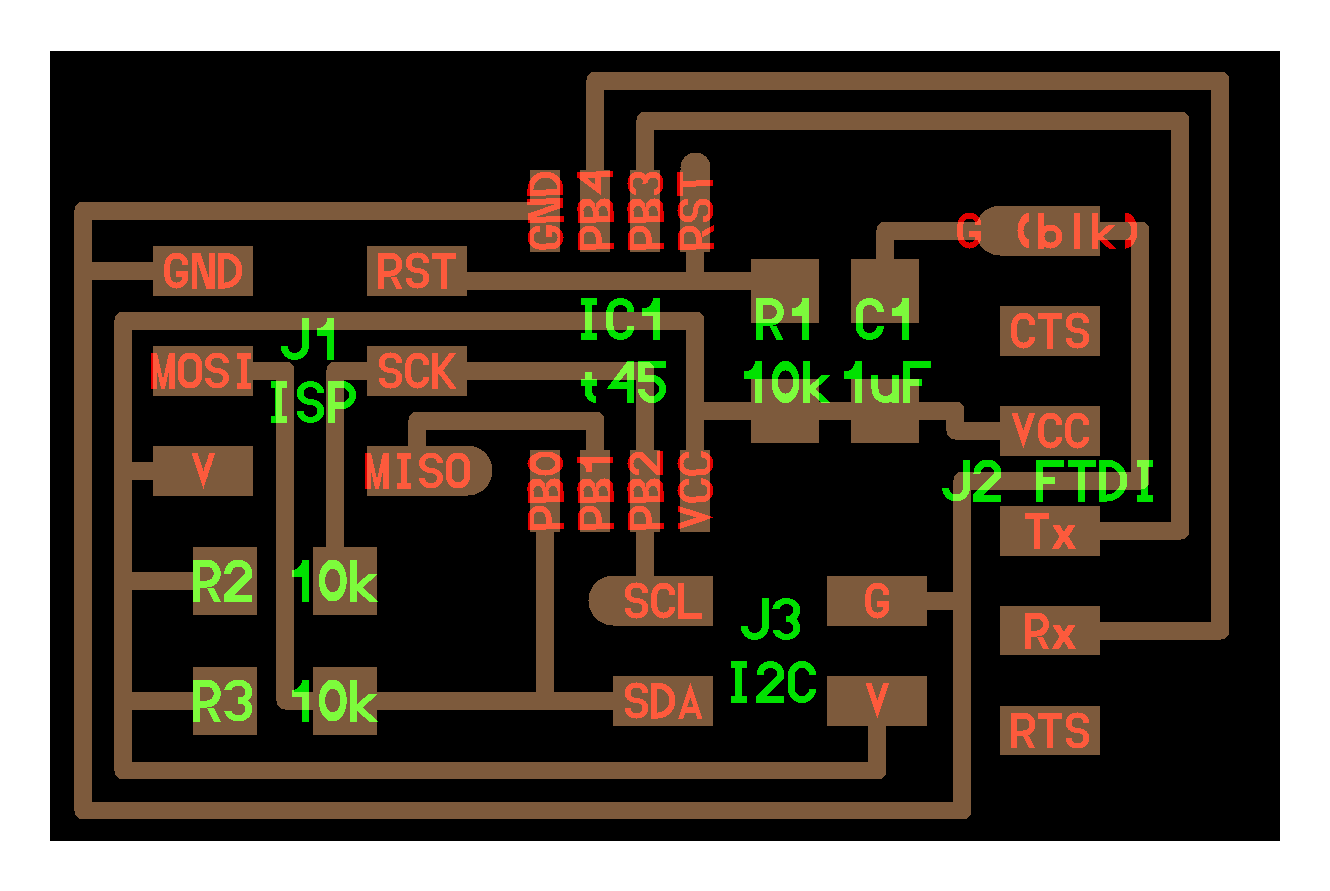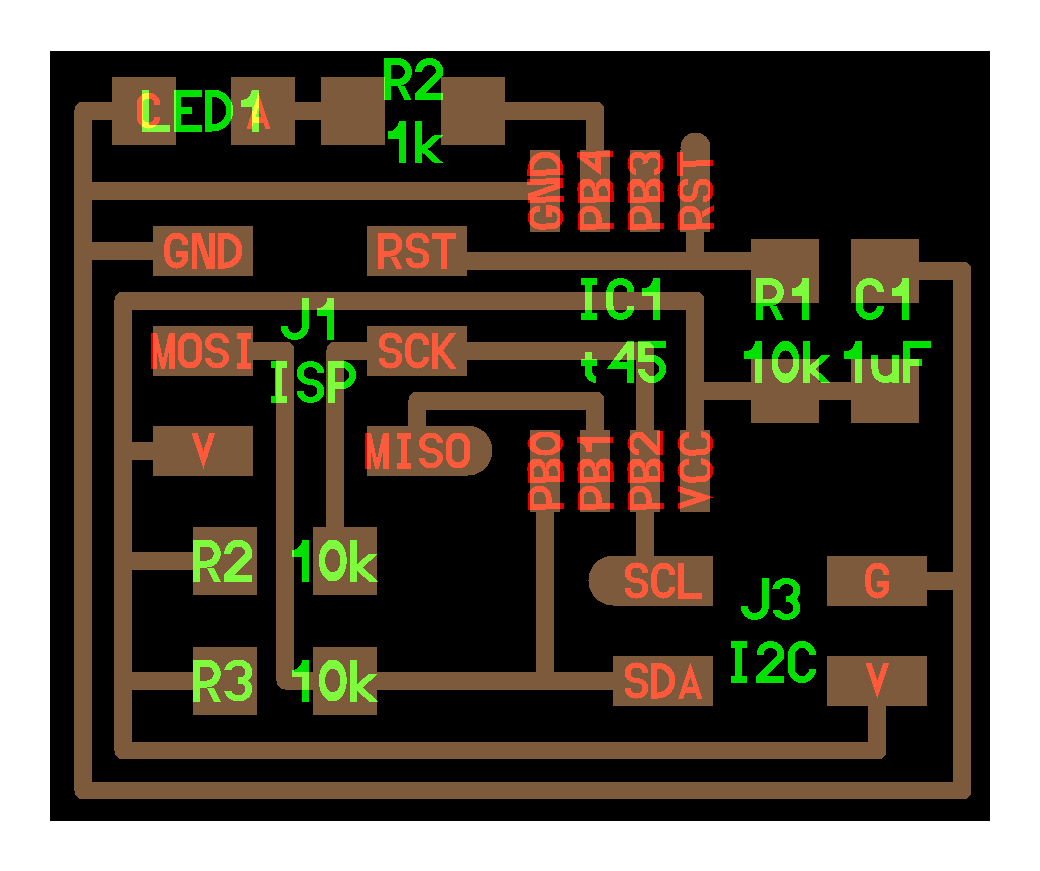How to (almost) Use I2C Bridge and Node with Arduino sketch¶
- class page Networking and Communications
- hello.I2C.45.bridge board

-
Note: MOSI_SDA line should be connected to PB0, not PB1
-
hello.I2C.45.node board

- Note: MOSI_SDA line should be connected to PB0, not PB1
Arduino lib Download¶
I2C Master¶
- TinyWireM.zip
- index.zip will download
I2C Slave¶
- TinyWireS.zip
- index(1).zip will download
Arduino Sketch¶
Ref. graduate page
I2C Bridge (Master)¶
#include (TinyWireM.h)
#define slave1 (1)
#define slave2 (2)
void setup() {
TinyWireM.begin();
}
void loop() {
TinyWireM.beginTransmission(slave1);
TinyWireM.send(1);
TinyWireM.endTransmission();
delay(2000);
TinyWireM.beginTransmission(slave1);
TinyWireM.send(0);
TinyWireM.endTransmission();
delay(2000);
TinyWireM.beginTransmission(slave2);
TinyWireM.send(1);
TinyWireM.endTransmission();
delay(2000);
TinyWireM.beginTransmission(slave2);
TinyWireM.send(0);
TinyWireM.endTransmission();
delay(2000);
}
I2C Node (Slave 1)¶
#include (TinyWireS.h)
int output=PB4;
#define I2C_SLAVE_ADDR (1)
//#define I2C_SLAVE_ADDR (2)
void setup() {
// put your setup code here, to run once:
TinyWireS.begin(I2C_SLAVE_ADDR);
pinMode(output, OUTPUT);
}
volatile byte msg = 0;
void loop() {
if (TinyWireS.available())
msg = TinyWireS.receive();
if (msg == 1)
digitalWrite(output, HIGH);
else if (msg == 0)
digitalWrite(output, LOW);
else
msg = 0;
}
I2C Node (Slave 2)¶
#include (TinyWireS.h)
int output=PB4;
//#define I2C_SLAVE_ADDR (1)
#define I2C_SLAVE_ADDR (2)
void setup() {
// put your setup code here, to run once:
TinyWireS.begin(I2C_SLAVE_ADDR);
pinMode(output, OUTPUT);
}
volatile byte msg = 0;
void loop() {
if (TinyWireS.available())
msg = TinyWireS.receive();
if (msg == 1)
digitalWrite(output, HIGH);
else if (msg == 0)
digitalWrite(output, LOW);
else
msg = 0;
}
- the master is communicating with the node (slave 1), then send a 1 and 0 to the node.
- The node (slave 1) will then respond by turning ON and OFF the LED which correspond with the condition set with the message receive.
- the master communicate with node (slave 2) and then the process is repeated.